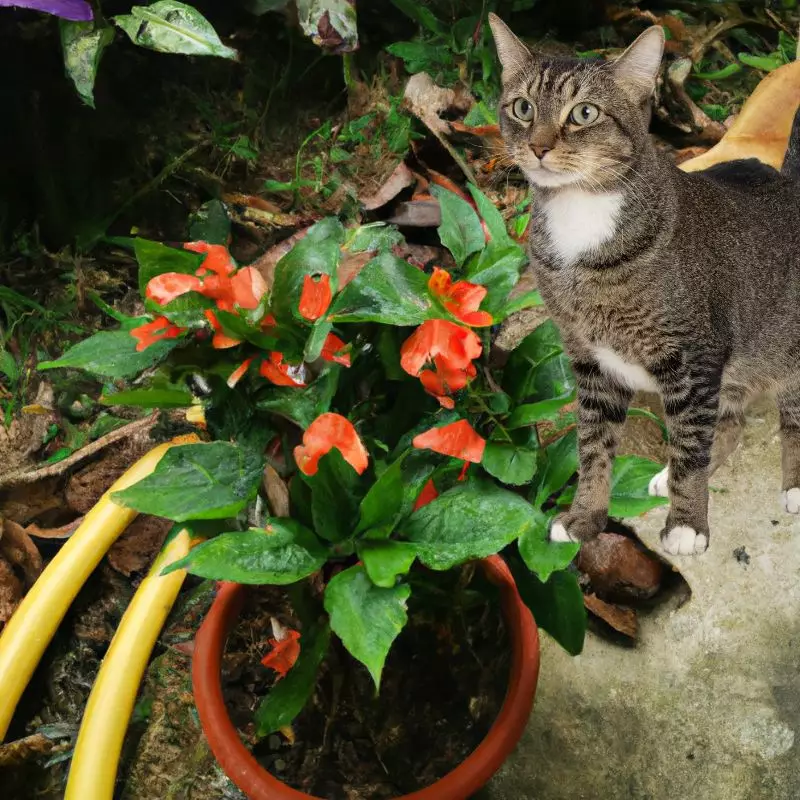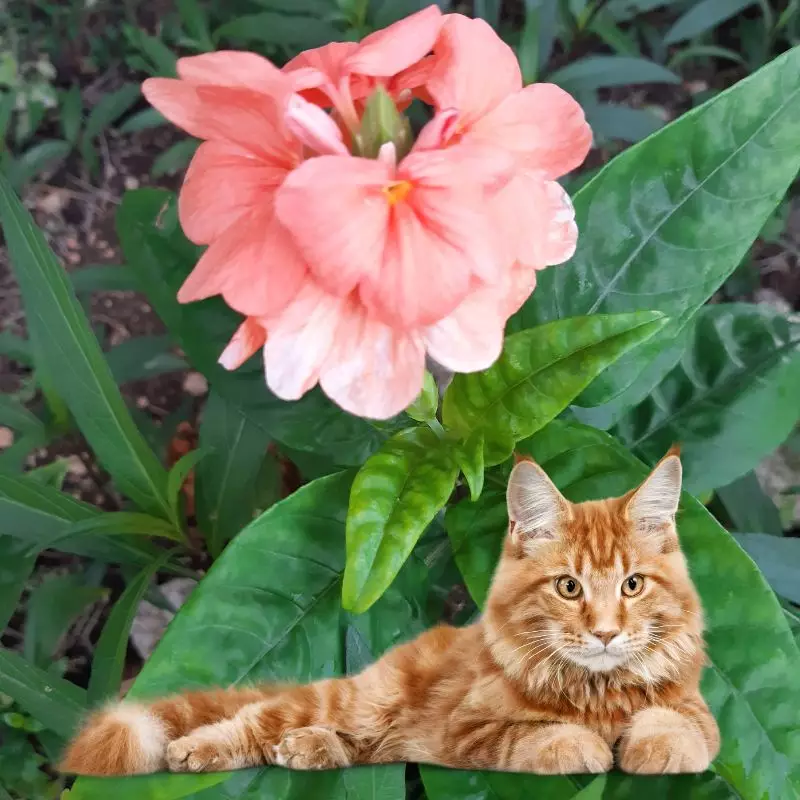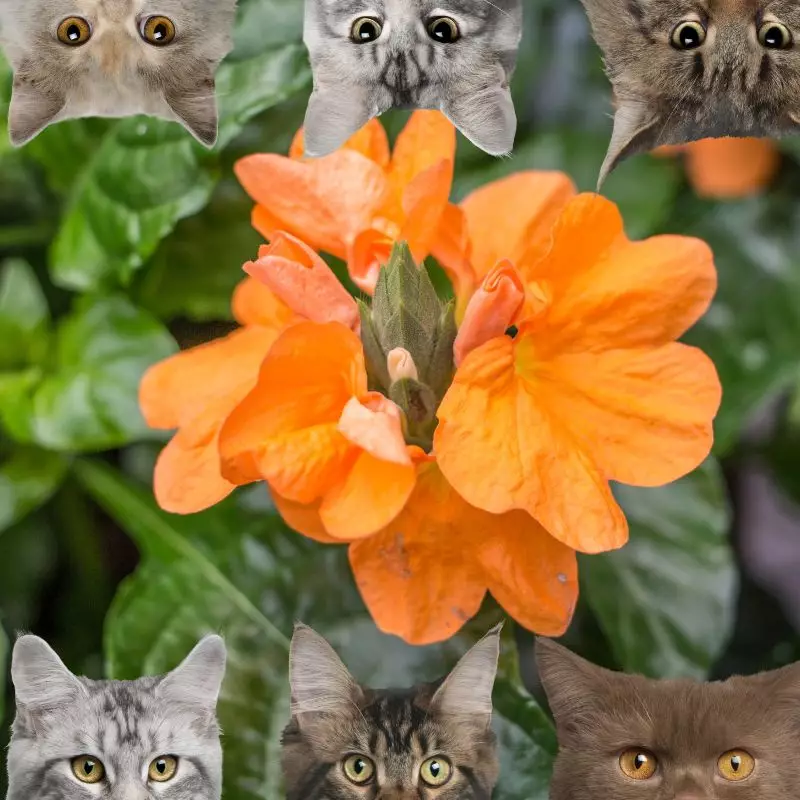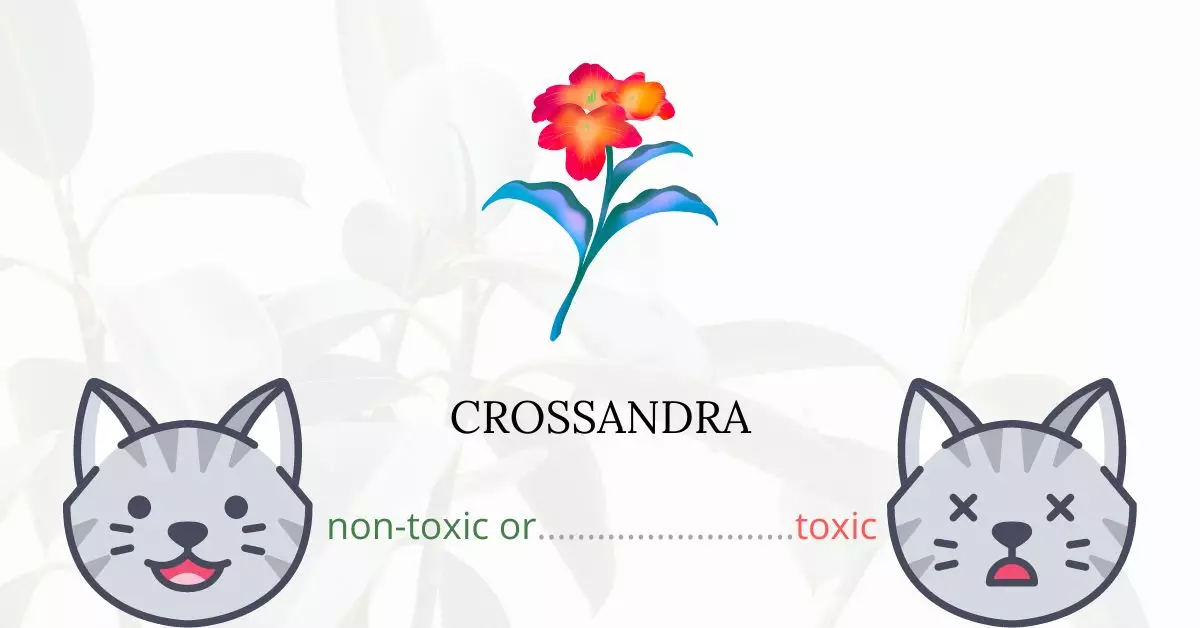Crossandra is safe for cats; it is not toxic.
This information has been meticulously validated by our collaboration with a team of experienced DVMs (doctors of veterinary medicine). Through their invaluable insights, we ensure that the data provided in this article about Crossandra and its effects on cats is both accurate and current. Additionally, our findings are supported by comprehensive research on high-authority websites such as the ASPCA and PetMD.
Notably, Crossandra is included in the list of non-toxic plants by the American Society for the Prevention of Cruelty to Animals (ASPCA). For those who have Crossandra at home, you can be reassured that even if your feline companions touch, nibble, or lick the plant, there’s no need for concern over any negative effects. Furthermore, Crossandra is also safe for dogs and horses.
Can Cats Eat Crossandra?

Cats can eat crossandra and not feel any adverse effects. However, it is still not recommended for felines to regularly eat crossandra or any kind of plants.
Plants are not digested completely in a cat’s stomach. Because felines are carnivores, they lack enzymes that can process plant matter. Once they have consumed excessive portions of plants, they can have indigestion and stomach issues.
What is Crossandra?

Crossandra is a plant species of the Acanthaceae plant family. It is a one-meter-tall erect, evergreen subshrub with glossy, wavy-margined leaves and fan-shaped blooms. Crossandra flowers have 3 to 5 asymmetrical petals. They develop from four-sided stalked spikes and have a tube-like two-centimeter stalk. Flower colors range from the typical orange to salmon-orange or apricot, coral to red, yellow, and even turquoise.
This plant demands a minimum temperature of 10 °C and is grown as a houseplant in temperate countries. It is typically planted in pots, although it may also look nice in beds. The blooms have little aroma but remain fresh on the shrub for several days.
The small blooms are frequently strung together into strands, sometimes with white jasmine blossoms, and are thus in high demand for constructing garlands to be given to temple deities or used to decorate women’s hair.
It is also known as the firecracker flower because of its seed pods, which appear after the blossom has faded and explode when exposed to high humidity or rains.
Keeping Cats Away From Crossandra

Most cats eat plants because of curiosity and hunger. Keeping your feline companions well-fed and mentally stimulated can help keep them from nibbling on your plants.
You may also try to use natural deterrents on your plants. Natural deterrents are available at a variety of pet supply stores. You may also create your own by diluting vinegar in water. Cats loathe the scent and taste of vinegar, making it an effective deterrent.
Placing your plants in a space where your cats cannot reach is also helpful. While it is a fact that they are high jumpers, cats usually do not go out of their way just to nibble or mess with a plant.
Plants to Avoid For Your Cats
If you are a cat owner and unsure if the plants growing in your yard are harmful to your cats, check out this list of toxic plants for cats. You can also check our list of non-toxic plants for cats.





